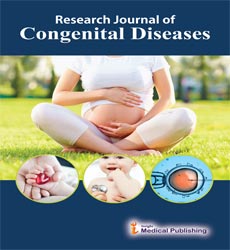Abstract
Analysis of Risk Factors Related To Hip and Head Imaging Abnormality Rate in Children with Cerebral Palsy
Objectives: To investigate the relationship between the related risk factors of children with cerebral palsy in hip and brain and provide guidance for the implementation of early intervention.
Methods: We recruited 198 children with cerebral palsy aged 1-12 years old from five rehabilitation institutions in Anhui Province. Chi-square test was used to analyze the relationship between gender, birthplace, head imaging features, hip joint imaging features, limb disability types and dyskinesia types.
Results: The abnormal hip joint imaging rate of children born in township hospitals is slightly higher than that born in county-level hospitals (29.6%:27%), but no statistical difference was found (x2=0.132, P=0.717). There was statistical difference between the different types of dyskinesia and hip joint imaging features(x2=8.136, P=0.043). There was no statistical difference between the different types of limb disability and hip joint imaging features (x2=1.252, P=0.535). There was no significant difference between different genders and hip joint imaging features (x2=0.502, P=0.479). The head imaging abnormality rate of children born in township hospitals is slightly higher than that born in county-level hospitals (73.8%68.6%), but no statistical difference was found (x2=0.537, P=0.464). There was significant difference between head imaging features and dyskinesia types (P=0.004).
Conclusion: We need to be highly vigilant for the hip joint abnormality in children with dystonia and mixed type cerebral palsy. Early intervention guidance should be strengthened for children with cerebral palsy born in township level hospitals.
Author(s): Zhang JN* and Wu JX
Abstract | Full-Text | PDF
Share This Article
Google Scholar citation report
Citations : 8
Research Journal of Congenital Diseases received 8 citations as per Google Scholar report
Abstracted/Indexed in
- Google Scholar
Open Access Journals
- Aquaculture & Veterinary Science
- Chemistry & Chemical Sciences
- Clinical Sciences
- Engineering
- General Science
- Genetics & Molecular Biology
- Health Care & Nursing
- Immunology & Microbiology
- Materials Science
- Mathematics & Physics
- Medical Sciences
- Neurology & Psychiatry
- Oncology & Cancer Science
- Pharmaceutical Sciences


